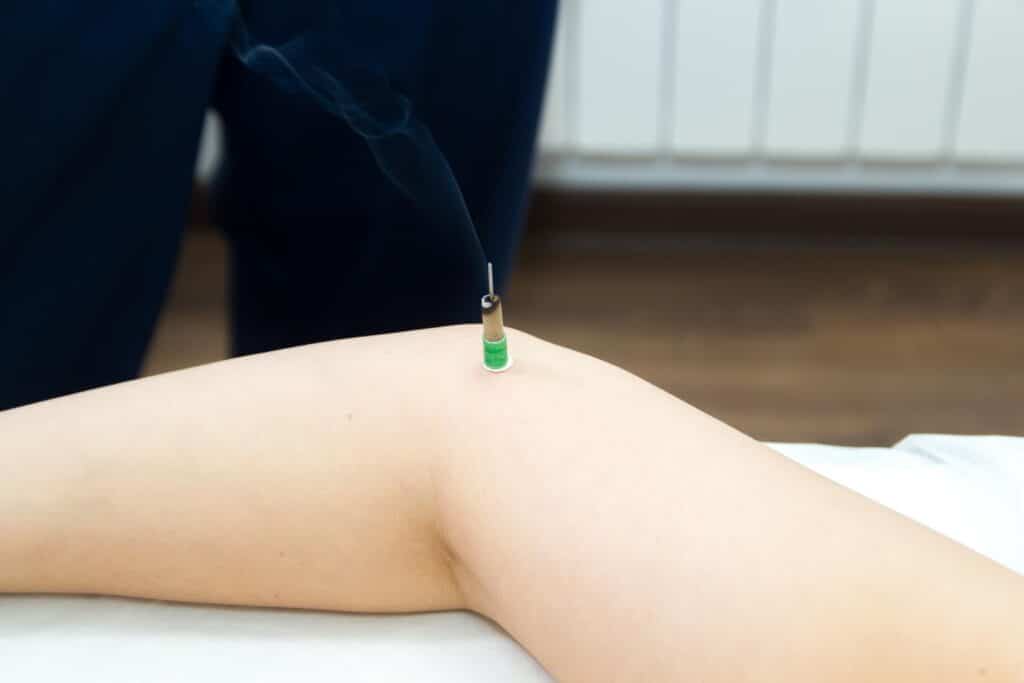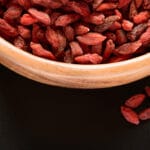According to the American Medical Association Journal, over 100,000 Americans die in hospitals every year due to side effects from regularly prescribed medications. Throughout America, a huge amount of medication is prescribed on a daily basis. The medical community openly acknowledges that fact that it does not have any cure for several common diseases that affect people.

Most allopathic medicines have side effects that can range from mild to severe. The reason for this is that most of these chemicals have certain toxic properties. This is why there have been so many prescription drugs that got pulled from the market after enjoying several years of FDA approval.
The sad thing is that very few doctors nowadays bother to inform patients about possible side effects due to close and cozy relationships with the pharmaceutical industries.
Half of the truth is that pharmaceutical companies will only tell doctors as much as they want to and not reveal the complete picture. Therefore, the doctors are not completely to blame because they cannot warn patients against side effects of chemicals they are not aware of.
The trouble is that the business is so profitable is that these medicine manufacturers are more concerned with profits and FDA approval rather than the overall effect on the patients.
This is one reason why several doctors are now beginning to recommend complementary alternative treatments, like herbal therapies and medicines.
Here are some interesting facts:
- The totally amount of annual profits made by pharmaceutical companies through sale of drugs in the United States alone is over $100 billion.
- More than 25% of all prescription drugs available contain plant derivatives.
- More than 80,000 types of plants are used all over the world for medicinal purposes.
- Over 75% of the global population depends on herbal remedies for regular treatment.
There are several choices available for people who are looking for alternative remedies, including Acupuncture, Yoga, Qigong, Tai chi, Ayurveda, hydrotherapy, massage therapy, homeopathy, energy medicines, holistic approaches, and aromatherapy. In fact, the number of herbal remedies available for different ailments equals (if not exceeds) the number of regular drug treatments provided by pharmaceutical companies.
The point is that prevention always was and always will be better than any cure, mainstream or alternative. The advantage of herbal remedies is that they move an individual towards a lifestyle more geared toward prevention and cure in the early stages of any affliction.
Pharmaceutical drugs work only after the problem has development, they do not try to prevent problems because then the manufacturing companies would go into a loss.
This is where herbal remedies leave the mainstream drugs behind. This is also the reason why so many people are daily turning to herbal therapies.
Herbal remedies treat the cause of the disease and not the symptoms (like conventional drugs). Herbal remedies also have almost no side effects.
The Alternative Cure Advantage:

Alternative medicine believes that natural health is a consequence of a variety of different sources coming together. Thus it chooses the best from various options available, in order to provide good health. It does so by building the strong points, preventing the weak ones, and generally dictating a lifestyle that is naturally healthy. Alternative medicine branches that promote natural good health include herbalism, natural hygiene, naturotherapy, and nutripathy. Nowadays it has become common to provide these, as complementary therapies to conventional methods of treatment. Terms like alternative medicine and natural health always seem to get associated with the Far East. It should be noted that most of the core concepts behind natural health are of European origin.
In the old age the only health care that was available to the common man was self care. While medical science existed in a very rudimentary state, it was by no means as prolific as it is today. Most of the “doctors” in that era were referred to as “folk healers” (people who heal other people) and their medical qualification was nothing more than a short apprenticeship under some sort of superior.
At the time of the Revolutionary War, practicing the art of medicinal healing was looked upon as a diversion, something to dabble in when you had time to spare. It was supposed to be something that an individual did when not doing a regular job. Folk remedies were handed down from one generation to the next. Men and women who had learned these remedies simply applied them to everyday life like their predecessors. In this way, matters like childbirth, injuries, and illness were taken care of.
Geographical distance and biological diversity naturally made these folk remedies different in different places. So, while the roots of such healing can be traced to Europe, once they had been adapted to the Americas, they were not so readily recognizable.
In 1830, Frances Wright and other reformers and activists started the Popular Health Movement. This was a period when advances in medical science were forcing contemporary doctors to think in terms that would have been sacrilegious to their elders. Frustrated by these new developments, proponents of the Popular Health Movement sought to enforce the usage of older methods into the practice of modern medical professionals. While some good has resulted (in the long run and with the help of understanding provided by modern research), it has to be admitted that the Popular Health Movement also caused some medical blunders.
Some natural health concepts that arose as a result of the Popular Health Movement are: Hydrotherapy, Herbalism, Eclectic Medicine, and Natural Hygiene.
Thomsonianism is one of the earliest approaches to modern western herbalism and it was founded by Samuel Thompson around the year 1820.
The Association of Eclectic Physicians, an organization of herbals doctors, was found in Wooster Beech.
At its very height, eclecticism was practiced by over twenty thousand qualified doctors in the United States. By 1939, medical schools were being largely influenced by philanthropists, and when these schools failed to support eclecticism, it slowly died out.
Hydrotherapy was another branch of natural health and it concerned itself with the application of water to the human body. Though using only water as means of staying healthy might sound a bit silly, for that time period it was a good thing. Hydrotherapy advocates were very vocal about the importance of personal habits such as diet, dress, clean water, fresh air, exercise, sunshine, and herbs. Personal hygiene as it is followed today was not always such an important issue. Hydrotherapy was conveying a very important message. Origins of hydrotherapy can be traced back to Europe in the Roman era when spas and hot mineral springs were a common way for people to cleanse their bodies.
The European system of hydrotherapy was first introduced to the United States in 1844 by the founder of Natural Hygiene, Dr. Joel Shew. Dr. Shew later on enhanced hydrotherapy by focusing on its other aspects like fresh air, lots of sunshine, a good diet plan, and an exercise routine. In 1853 he established the college of Hygieo Therapy.
The American Natural Hygiene Society was founded in 1948. Eventually, hydrotherapy had to give way to allopathy. This was largely brought about by the fact that the people supporting allopathy viewed hydrotherapy as a science of quacks because hydrotherapy was so closely associated with the female social activists of that era.
The core belief of natural health therapy is that all issues related to health, sickness, and healing can be overcome through simple means like prevention and a change in individual lifestyle. Natural health follows the oldest rule of medicine: prevention is better than cure. In view of this, natural health therapies are supposed to be totally in control of the individual and not the doctor or healer.
The “natural” in the term natural health literally refers to the physical world in which we live, or nature. This is but another way of saying that according to natural health therapy all disease and illness is nothing more than a natural reaction to some other natural action. It is important to remember that natural health does not have anything to do with faith or psychic healing which are supernatural concepts and hence, By definition, not part of nature. This difference is also the biggest distinguishing factor between natural health therapies of European origin and Eastern alternative medicinal theories that often rely on belief systems such as spirituality, karma, ancestral forces, personal auras, or energy flows. None of these can be perceived by our normal senses and hence the Europe-born natural health theories do not subscribe to them.
Going even further, natural health does not concern itself with the origin of life, any religious beliefs, extra-dimensional worlds, magic, and new age mysticism.
All natural health says is that all health and sickness can be affected by simple natural therapies.
At its most basic level it can be said that natural health therapy refers to only one thing: biological factors of health, especially as they apply to everyday life in western society. In its early history, the natural health movement did show considerable interest in hydrotherapy and the relaxation it offered through the usage of spas, steam baths, and other water cures. The more modern additions to natural health that concern themselves with the body-mind connection and how that relates to stress and tension are influenced by eastern alternative medical theories.
Having said that, what natural health therapy finally implies is that the human body has complete capacity to heal itself from most forms of sickness (of course, a broken bone cannot be fixed by altering your lifestyle, it needs to be put in a cast), mostly through prevention. So as far as natural health thinking goes, all healing is basically self-healing and this is considered to be a basic property of all things alive.
Vitalism
It is to be observed that as early 400 B.C., Hippocrates (who is considered to be the father of medicine) had written that, “the natural healing force within us is the greatest force in getting well”.
This is known as vitalism, also known as ‘vis medicatrix naturae’ (the inherent wisdom of the body).
To put it simply, whenever there is something wrong with the body the doctor will attempt something, for example: using antibiotics to kill the infection, perform surgery to remove a poisoned part or for amputation, put a broken bone into a cast, suture a flesh wound. All of these are part of the healing trade. The catch is that the body of patient has to actively respond to all this treatment otherwise it is wasted. Vitalism makes the body want to heal and get well. This is a well documented fact that people who deal with their physical problems confidently and cheerfully heal faster than others. The precise reason as to why this happens is not understood but the fact is still undeniable.
Holism
One explanation comes from the concept of Holism which says that the process of healing is a combined effort by the entire organism and cannot be achieved by any isolated part of that organism.
The Holism concept can be traced to the time of Paracelsus, 1439-1541, who is credited with being the father of modern medicine. When Paracelsus treated patients he refused to pay attention to only that part which was showing symptoms of disease. Instead, he tried to treat the whole body as one whole entity.
Holism is not a symptom=cure sort of healing technique. It involves a careful study of the defensive abilities of each individual patient’s body. Practitioners have to have the knowledge to differentiate between disease symptoms and the defensive or recovery systems.
What Holism believes is that when someone falls sick, their whole body has undergone some kind of weakness and has lost the balance of its strength. So the solution is to simply restore the strength of the body.
All western natural health therapies rely on biological factors and the better developed psychosocial approaches are a modern addition.
Individualism
This concept is different in the sense that it places all responsibility for sickness and good health on every individual in a society. So everyone is responsible for their personal health.
Individualism results from an awareness of the importance of individuals in a community and the resulting virtues of self-reliance and personal independence. Well-rounded individuals are both self-reliant and independent.
Victim-blaming
What this means is that if someone gets sick then the victim of the sickness did something wrong. While it might sound a little weird what it honestly means is that personal health is a personal responsibility and no one can blame someone or something else for his or her illness. It focuses on the self. Improve yourself because the environment around you is too big to change for one individual. In other words, health problems should be self corrected and the obvious solution is a change in the victim’s lifestyle.
Prevention
This is probably the most difficult concept for the modern day individual to grasp. Though everyone is aware of the phrase ‘prevention is better than cure’ there are few people who actually go the extent of preventing even the most obvious trouble (think about smoking, alcohol, high cholesterol foods, sugar, etc.). Prevention does not merely suggest that troublesome activities should be avoided. What is says is that improving health is better than fighting disease. It suggests the application of this to short term as well as long term negative effects. In the short term, a healthy body can easily ward off minor illnesses (like common cold) and injuries (razor cuts, skin peeling during sports activities for instance). In the long term prevention suggests caution in all that is done today so that it does not result in adverse outcomes in the future. In other words, it too suggests a change in lifestyle for a healthier tomorrow. Reasonably good health can be achieved by everyone. What is even better that the means to do so do not have to acquired from anyone, the capacity to do so lies within us.


